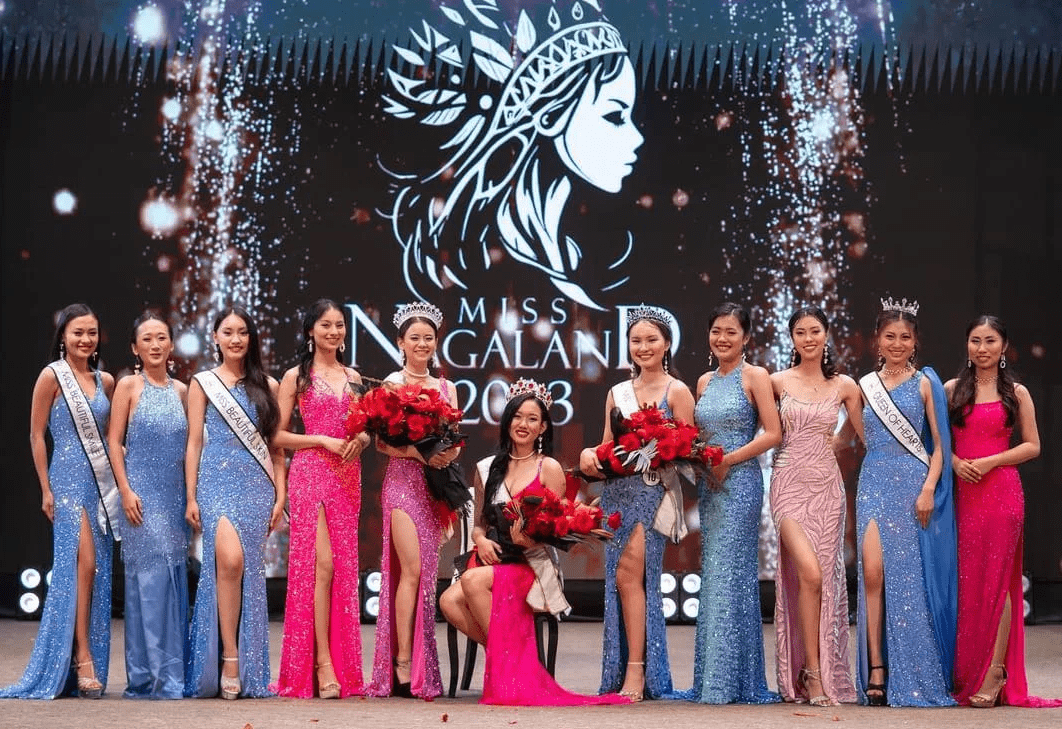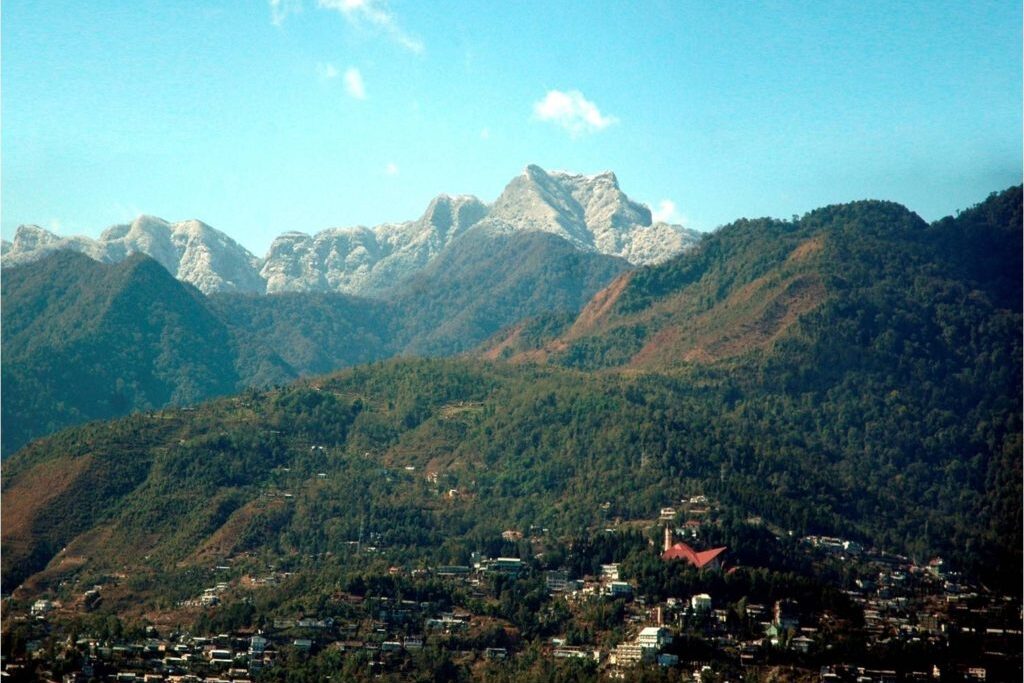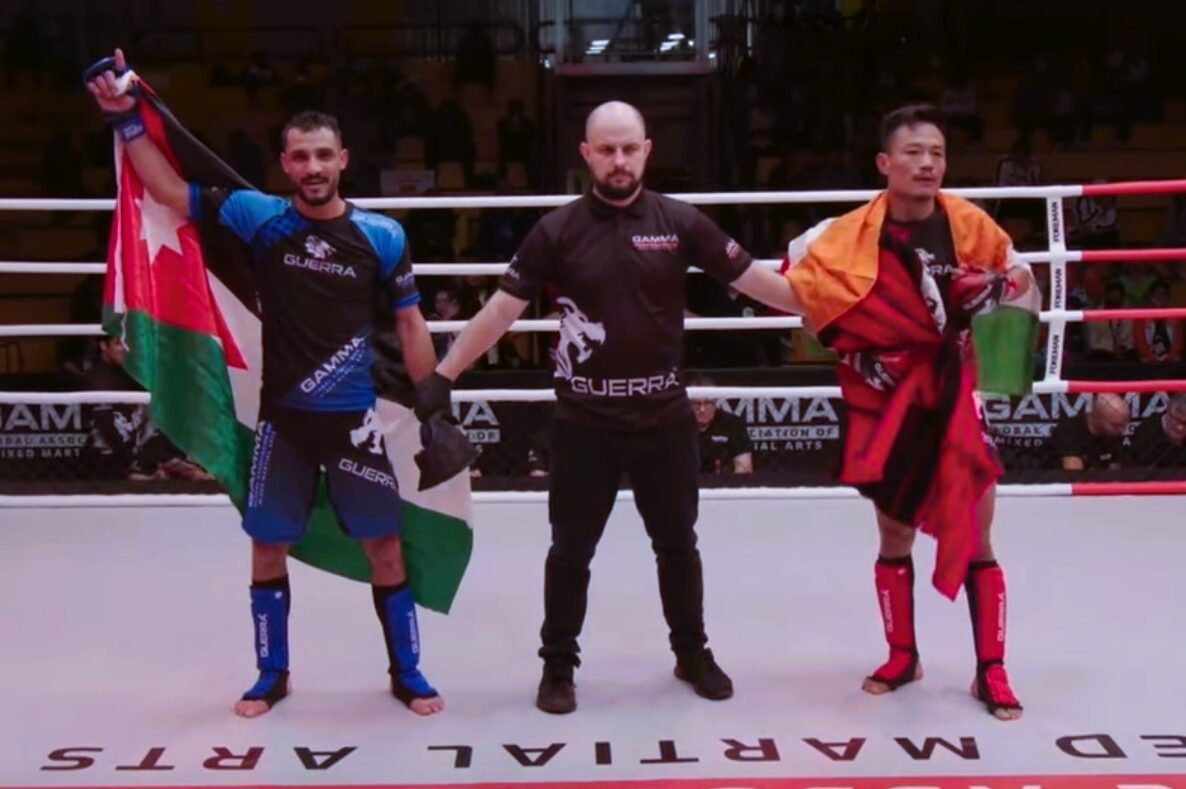Important Events in Naga History (1900 – 1963)
1912: British rule established in Nagaland.
1918 – Formation of Naga Club
- Naga Club is considered the first sign of Naga resistance and the socio-political foundation for the Naga nationalist movement.
- NOTE: There are varying versions behind the formation of Naga Club as you must have read in various dialies.
- The commonly believed version is that the formation of Naga Club was initiated by a group of Nagas who returned from France after the World War I. During the World War I (1914–18), the British Government recruited a number of labourers and porters from the Naga tribes. As part of the Naga Labour Corps, around 2000 Nagas were sent to France, where, alienated from the other British Indian troops, they developed a sense of unity. These Nagas came together with the British officials and formed the Naga Club in 1918.
- Another version is that the Naga Club was formed by some educated Govt. servants serving in the DC’s office, Kohima on 7th Jan. 1918. According to this version, the Naga Club was already in existing when the Naga Labour Corps returned, in batches. Some of them did join the Naga Club. According to this version, the Chairman of Naga Club, Rheichalie Pienyü, peshkar at DC Office Kohima, and his team served the Naga Club from 1918 to 1942. According to this version, the formation of Naga Club was inspired by the White Club that existed in Kohima those days, which was all White Club.
1919: Declaration of the Naga Hills District as a “Backward Tract”
The Government of India Act 1919 declared the Naga Hills District as a “Backward Tract”. The area was to be treated as an entity separate from the British Indian Empire.
1929: Simon Commission came to Kohima, and submission of Memorandum by he Nagas to the Simon Commission
- Nagas submitted memorandum to the Simon Commission requesting that the Nagas should be given a choice of self-determination after the British departure from India.
- The purpose of the Simon Commission was:
The objective of the Simon Commission was to review the working of the Government of India Act 1919 and decide the political future of India. The Simon Commission was opposed in India because there was no Indian representative. It was a group of 7 British Members of Parliament headed by John Simon.
1935: Naga Hills designated as ‘Excluded Areas’ by the GoI Act of 1935.
1937: Birth of NBCC
- Naga Hills Baptist Church Advisory Board existed prior to 1937, and it was renamed to Naga Hills Baptist Church Council in 1937.
- After the inauguration of Nagaland as a separate State, the name was changed to Nagaland Baptist Church Council (NBCC) as it is known today.
- Basing on the year 1937, the Nagaland Baptist Church Council celebrated the completion of Platinum Jubilee (75 years) in the year 2012.
1939, April 1: British District “Naga Hills” declared as “Naga Hills Excluded Area” under the Government of India.
1944: World War II – Japanese siege of Kohima
- Battle of Kohima ( 4 April 1944 — 22 June, 1944)
- Kigwema village as HQ for General Satoi (Japan).
1945, April: Formation of Naga Hills District Tribal Council (NHDTC)
- In April 1945, the deputy commissioner of the Naga Hills District, Charles. R. Pawsey , established the Naga Hills District Tribal Council as a forum of the various Naga groups in the district.
- C.R.Pawsey – is considered to be the last British Ruler to the Naga Hills.
1946, February 2: Formation of Naga National Council (NNC) at Wokha
- In February 1946, Naga Hills District Tribal Council was reorganized as a political organization called Naga National Council (NNC).
- Naga National Council (NNC) was formed on 2nd February 1946 at Wokha in Lotha Region sponsored by the NHDTC.
- Mr. T. Aliba Imti became the 1st President of the NNC.
- ‘The Naga Nation’ published by T Sakhrie and V. Iralu.
1946, June: Demand for Autonomy
- In June 1946, a memorandum was presented to the British Government wherein the NNC demanded an autonomous status for the Naga region.
- NNC passed a resolution on 19 June 1946 at Wokha in Mokokchung division – that it was against grouping of Assam in Bengal, and wanted the Naga Hills District to be included in an autonomous Assam in the independent India. It further emphasized local autonomy for the Naga Hills District, and a separate electorate for the Naga tribes.
1947, February 20: Demand for Interim Government
- The Nagas demanded an Interim Government(Guardian power), effected prior to the British departure, for a period of ten years and self-determination there after.
1947, June 26: Naga-Akbar Hydari Accord, 1947 or The Nine-Points Agreement
The Naga-Akbar Hydari Accord, 1947 or The Nine-Points Agreement (Kohima, 26-28 June 1947) signed by the Naga National Council (NNC) and the Governor of Assam.
- On June 26, 1947, Sir Muhammad Saleh Akbar Hydari, the Governor of Assam, reached a Nine-Points Agreement with the Naga leaders with moderates like T Sakhrie and Aliba Imti.
- The 9-point accord was signed between the then Governor of Assam, Akbar Hydari and the representatives of the Naga National Council at Kohima after three days of deliberation.
- The following Tribes represented at discussions on the 26th, 27th and 28th June, 1947 at Kohima: Western Angamis, Eastern Angamis, Kukis, Kacha Nagas (Mzemi), Rengmas, Semas, Lothas,Aos,Sangtams,Changs.
- It was decided that the Nagas would be granted judicial, executive and legislative powers, as well as autonomy on land, taxation related matters. Another point in the agreement was to bring back land transferred to the Sibsagar and Nowgong Districts in the past and unification of Naga territories from nearby districts into the Naga Hills District.
- The period of this Nine Points agreement was for 10 years at the end of which the Nagas could choose between extending the agreement or a new agreement.
- However, the Indian Constituent Assembly refused to ratify The Naga-Akbar Hydari Accord. The Naga leaders envisaged a sovereign state with India as a “Guardian Power” for ten years, while the Indian Constituent Assembly concluded that the Nine Points Agreement guaranteed only a “district autonomy within the Indian Constitution”.
(Ref: http://nagalandgk.com/naga-akbar-hydari-accord-1947-nine-point-agreement/)
1947, July 19 : NNC meeting with Mahatma Gandhi
- On 19 July 1947, an eleven-member Naga delegation led by A Z Phizo met the Indian nationalist leader Mohandas Karamchand Gandhi at his residence in Bangi Colony, Delhi to discuss the issue of Naga autonomy and informed him of the decision by the Nagas to declare Independence.
1947, August 14 : Declaration of Naga Independence
- On 14th August 1947, the NNC declared independence to the outside world by hoisting their national flag. Information about this declaration was also cabled to the United Nations as well as to Great Britain.
1947, August 15 : Independence of India
1947, October 29: The Naga Students’ Federation (NSF) formed.
- NSF is the largest representative body for students of the Naga people. It was established on 29 October 1947.
- On 7 May 1947, student leaders from Angami, Ao, Lotha, Sümi gathered at Kohima and decided to have the inaugural session of the Naga Students’ Federation on 17 May 1947. However, the proposed meeting could only be held from 29 to 30 October 1947 whereby NSF came into being under the Chairmanship of Z. Ahu.
- The second session of the Naga Students’ Federation was held in Mokokchung from 13 to 15 October 1948. However, after the second session the NSF went defunct for 17 years due to the rising Naga political crisis and the imposition of Army Rule in the Naga Hills.
- The NSF became fully functional only in 1971.
1948: First administrative centre opened in Tuensang (27th Jan).
1948: Dr. Talimeren Ao led the Indian Football team to the London Olympics.
1948, January 4: Burma obtained independence from British
- The Burmese obtained independence from the British Colonial rule on 4th January 1948.
- The Burmese Government claimed the Eastern part of Nagaland was an integral part of the Myanmar Union. The Eastern Nagas therefore fought against the Burmese army in the 1950s.
1950, December 28: Angami Zapu Phizo elected President of NNC on December 28, 1950
1951, May 16 : Naga Plebiscite signed for sovereignty
- Naga Plebiscite of 1951 organised by the NNC – 99.9% of the Nagas voted in favour of Naga Independence.
- Assam Governor Shri. Jairamdas Doulatram visited and Memorandum for independence was submitted to him.
- Source: PHIZO’S PLEBISCITE SPEECH http://www.neuenhofer.de/guenter/nagaland/phizo.html
1952, January 25 : First General election of free India started
- The Nagas did not participate in the election.
1952: First Naga martyr Zasibito Nagi killed by Indian army (18th Oct 1952).
- Zasibito Nagi (from Jotsoma) was a Naga leader and Asstt. Judge, Court of Kohima Central Court, was killed by Indian Army Officer on the main road of Kohima.
1953, March 30 : Prime Minister Pandit Jawaharlal Nehru visited Nagaland with U Nu, the then PM of Burma. Nagas walked out on Nehru
- Pandit Jawaharlal Nehru, the first Prime Minister of India and Mr. U Nu, Burmese Prime Minister visited Kohima in 1953.
- A good number of Nagas gathered at Local Ground in Kohima to see Nehru. But before Nehru spoke to the crowd, an announcement was made that the Nagas would not be allowed to meet Nehru to submit a memorandum. In protest, the spectators started leaving the meeting Nehru was addressing.
1953: Massive crackdown on NNC beging
- Troops in large numbers were moved by the Government of India into the Naga hills to crackdown on NNC and its activities.
1954, July 4: NNC established the Naga Supreme Court on July 4, 1954
1956, January: The Naga Hills District was declared a “Disturbed Area”, putting it under the Indian Army’s command.
1956, January 14 : The Yehzabo (Constitution) of Nagaland was approved on 14th January 1956 by NNC.
1956, March 22 : Formation of Federal Government Nagaland (FGN) by NNC + NNC convened first Tatar Hoho(parliament) at Rümisinyu in Rengma region + hoisting of first Naga National flag (22nd March).
- Following the Yehzabo (Constitution) , the Federal Government Nagaland (FGN) was formed on 22nd March 1956 under the aegis of the Naga National Council during the first Tatar Hoho(parliament) at Rümisinyu in Rengma region.
- Along with FGN, an underground armed wing Naga Federal Army (NFA) was also formed.
- The first Naga National Flag was hoisted on the same day, 22nd March 1956 at Rümisinyu in Rengma region.
1956: Assassination of T Sakhrie.
1956 (June and July): Killings of mostly teachers and Gaonburas (GBs) by the Underground as they were suspected of loyalty to the Government.
1957: Village Guard (VG) founded at Pangsha Village, Tuensang
- Village Guard (VG) is founded at Pangsha Village with the initiative of Padmashri Late Major R Khating M.C (IFAS) who was then the political officer of Tuensang Frontier Division under NEFA Administration.
- It was formally launched on 1st March 1957 designated as the Village Defence Guard (VDG).
- After the formation of Nagaland State, VG was expanded to other districts.
- Village Guards (VG) is a volunteer force of peasant soldiers, and their primary role is to defend their villages against insurgent and terrorist activity, and to assist security forces in their counter insurgency operations within village areas.
1957, August 22 to 26 : The first Naga People’s Convention (NPC) at Kohima.
- On the 22nd August, 1957, the Naga Peoples’ Convention was held in Kohima and the name ‘Naga Peoples’ Convention’ was coined.
- Dr. Imkongliba Ao was elected the President of the Convention and Shri. J.B. Jasokie was elected as Secretary.
- The Naga People’s Convention held in 1957 had demanded that the Naga hills district of Assam and the Tuensang Frontier Division of North-East Frontier Agency (NEFA) be merged into a single unit. The demand, which later led to the formatin of Naga Hills Tuensang Area (NHTA).
1957, December 1: Creation of Naga Hills-Tuensang Area (NHTA)
- Formation of Naga Hills Tuensang Area by merging Naga Hills District of Assam and Tuensang Frontier Division of NEFA.
- On 1 December 1957, Tuensang Frontier Division was separated from North-East Frontier Agency (NEFA) and attached to the newly formed Naga Hills District to form a centrally governed Naga Hills-Tuensang Area. (W.e.f. 1st December, 1957, vide notification No.S.R.O.3843, dated 30-11-1957 Gazette of India, Extraordinary, Part II- Section 3, page 2877} .
- Three districts were created under the new NHTA – Kohima, Mokokchung and Tuensang.
1957 – 1958: Grouping of Naga villagers by Indian Army.
1958, 21st to 23rd May: The Second Naga People’s Convention at Ungma, Mokokchung
- The significant outcome of the Second Naga People’s Convention was the sixteen-point proposal, which envisaged the formation of a new state to be known as Nagaland within the Indian Union comprising the territories of the Naga Hills Tuensang Area (NHTA).
- The Convention accepted the draft for a new Agreement with the Indian Government later to be known as ” Sixteenth Point Agreement”.
1958, September 11: The Armed Forces (Special Powers) Act enacted
- Armed Forces (Special Powers) Ordinance Acts were in existence before India’s independence to deal with Indian nationalism related violence.
- Post independence, Armed Forces Special Powers (Assam and Manipur) Act, 1958 was first enacted on 11 September, 1958 to deal with the Naga insurgency in the Assam region.
- Later, The Armed Forces (Punjab and Chandigarh) Special Powers Act, 1983 and The Armed Forces (Jammu and Kashmir) Special Powers Act, 1990,were also enacted to deal with internal security in the respective regions.
1959, October 22nd to 26th : The Third Naga People’s Convention was held at Mokokchung.
- The sixteen-point proposal was placed for approval before the third Naga Peoples’ Convention which met at Mokokchung from 22nd to 26th October in 1959.
- Dr Imkongliba Ao, was one of the most instrumental figure in the drafting of the 16 Point Proposal.
1960: Angami Zapu Phizo fled into exile to London on June 12, 1960.
- On 8th October 1960 he submitted a memorandum to the United Nations Organisation (UNO) attached with a document called “The fate of the Naga people – An appeal to the world.” In this memorandum he appealed to the world to intervene in the Indo-Naga conflict.
1960, July 26 : Sixteen-point Agreement signed
- Sixteen-point Agreement was signed between the Naga People’s Convention (NPC) and Govt. of India, leading to the formation of Nagaland state within India.
1961: NHTA was renamed ‘Nagaland (Feb.18) & Formation of Interim Body headed by P. Shilu Ao, as Chief Executive Councilor.
1961: A Z Phizo and his 11 member delegation met with Mahatma Gandhi at Bhangi Colony (19 July).
1962: State of Nagaland Bill introduced in the Parliament(21st Aug) and Nagaland State Act (13th Amendment) was passed by the Parliament.
1963: The Nagaland and Nationalist Organization (NNO) a regional political party established.
- Nagaland and Nationalist Organization (NNO) arose from the NPC.
- Some supporters of the NNC established the Democratic Party of Nagaland.
1963, December 1: Creation of Nagaland State
- Nagaland State was inaugurated on 1 December 1963 by the President of India, Dr.S. Radhakhrishnan.
- Nagaland became a full fledged state under the Indian Union. – the 16th state of India by Article 371A of the Constitution of India and placed under the External Affairs Ministry of Govt. of India.
- At the time of inauguration of the Statehood there were three districts, namely Kohima, Mokokchung and Tuensang.
- On 1 August 1965, the administration Nagaland was transferred from the Ministry of External Affairs to the Ministry of Home Affairs.
Previous: Important Events in Naga History – Part One
References:
- Naga Resistance Movement and the Peace Process in Northeast India (H. SRIKANTH & C.J. THOMAS)
- THE NAGA CONFLICT (M Amarjeet Singh, NATIONAL INSTITUTE OF ADVANCED STUDIES)
- South Asia Terrorism Portal – http://www.satp.org/satporgtp/sair/Archives/sair10/10_41.htm#assessment2
- http://www.satp.org/satporgtp/countries/india/states/nagaland/documents/papers/nagaland_9point.htm
- http://www.satp.org/satporgtp/countries/india/states/nagaland/documents/papers/nagaland_16point.htm
- Peace Maker, UN – https://peacemaker.un.org/sites/peacemaker.un.org/files/IN_470628_Naga-Akbar%20Hydari%20Accord.pdf
- Centre for Development and Peace Studies: http://cdpsindia.org/nagaland_incident.asp
- https://mevidur.wordpress.com/2015/08/10/nagaland-peace-accord-narendra-modi/
- https://uca.edu/politicalscience/dadm-project/asiapacific-region/indianagas-1947-present/



Leave a Comment (FB)